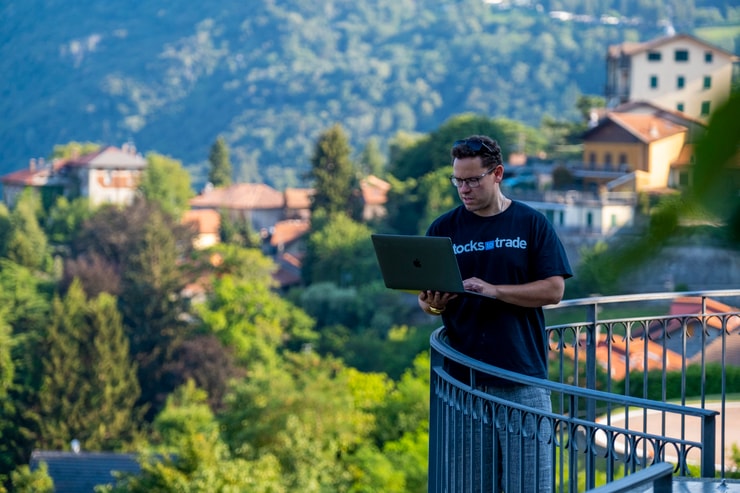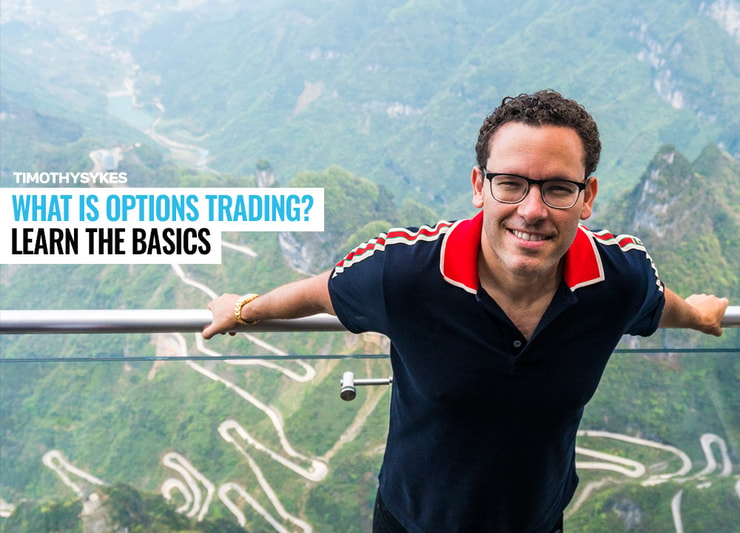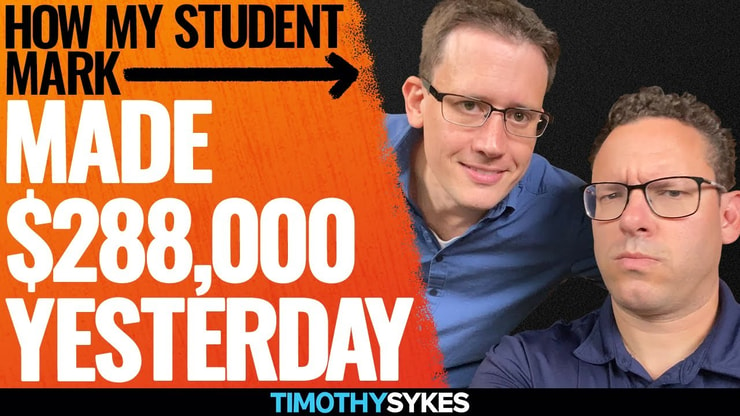The basics of options trading is the buying and selling options contracts, which give you the right to trade a stock at a specific price. It’s a major trading niche popular with many people. Even if you don’t trade options, it’s still a good idea to learn about them.
I don’t trade options, but my former student — and current Trading Challenge mentor — Mark Croock does. He’s evolved my penny stock trading style to work with options trading, and made $3.9 million in the process.
There’s a steep learning curve for options trading even if you understand stock trading. But that’s what I’m here for — read on to learn more about options trading and see if it’s right for you!
Table of Contents
How Does Options Trading Work?

2025 Millionaire Media, LLCOptions trading works through speculation. When trading options, you predict an asset’s price movements in a specific time frame. If your plan is right, you can make a profit.
Options contracts have no value in themselves—they’re derived from actual stocks and assets. These contracts give you the right to trade a stock at a certain price on or before its expiration date. They’re like stocks in that you can access them through online brokers and trading platforms.
Do you want to trade options on Robinhood? Check our guide on how to do it.
The two parties in the options market are the holder/option trader and the writer/option seller. The holder pays the writer for the option contract. This gives them the right to trade a stock at a certain share price within a specified period of time.
The money you pay the writer is called a “premium”. If you let your contract expire without trading, you’ll only lose the premium. The price specified in the options contract when it kicks in is called a “strike price”.
Learn more about how options trading works in this guide.
Why Invest Time Into Trading Options?
Time is your most valuable resource. If you’re trading options, you better be prepared to put the time in.
Here’s a quick breakdown of the advantages and disadvantages of option trading:
Advantages of Trading Options
- Options are flexible — you don’t have to buy the asset in question if you don’t think you’ll profit. You’ll only lose the option premium and nothing else if you let the contract expire. Or you can sell the option itself before the expiration date.
- Options are available for numerous investment vehicles, not just stocks. You can also buy options for indices, commodities, foreign currencies, and more.
- Options reward good speculation. Forget my advice about not predicting the market. A certain amount of prediction is necessary for options trading — even though it’s all in the chart.
Disadvantages of Trading Options
- Options trading has a bigger learning curve than traditional stock trading. There’s a new set of jargon and rules to learn, which might turn off newer traders.
- Brokerages limit stock options trading by default. You need to get approved by fulfilling certain requirements before trading options.
- Certain options trading strategies have a substantial risk of unlimited losses. Stay the heck away from naked options!
Different Types of Options Contracts You Can Trade

2025 Millionaire Media, LLCThere are two basic types of options you can trade. Here’s a breakdown of each type of options contract:
More Breaking News
- TeraWulf Stock Surge: What’s Next?
- GDS Holdings: Surge or Bubble?
- D-Wave Quantum’s $400 Million Boost: What’s Next?
Call Options
Buying a call option means you’re getting the right to purchase a stock at the specified strike price. Here’s an example of a call option in action:
Let’s say you expect a $40 stock in Company X will rise by 10% within the next few months. You can buy a call option to purchase 200 shares at $44 per share.
This is an “out of the money” (OTM) option. OTM options are less expensive than “in the money” (ITM) options, because they can’t be exercised until their strike price is attained.
Suppose Company X’s stock hits $46 before your option contract expires. If that happens, you can buy 200 shares at the $44 strike price and profit from the difference. But if the stock price never exceeds $44, you can ignore the option and lose your premium.
Put Options
A put option is essentially the opposite of a call option. It gives you the right to sell stock at a predetermined strike price. Here’s an example of it in action:
For instance, you project that Company X stock will fall from its current price of $40 in the near future. You get a put option to sell 200 shares of Company X stock two months from now, at a strike price of $36.
This is basically the shorting version of the call option example above… That’s one of the reasons that Robinhood traders use options so much — Robinhood doesn’t allow them to short!
Put options are a little harder to use, though. Level 1 covered calls require ownership of the underlying security when the contract executes.
If you already have shares in the underlying asset, you can use your shares to exercise the option. If stock prices go up, you can just sell your shares like normal. Traders call this option strategy “hedging.”
What happens if you don’t own the underlying security? You can sell the contract itself!
How to Trade Options

2025 Millionaire Media, LLCStock trading and options trading are different financial products. But my basic trading approach still works here:
- Study charts.
- Learn options strategies from successful traders.
- Make your own watchlists and plan your own trades.
- Don’t copy other people’s picks.
- Track your trades.
Options trading is a marathon, not a sprint. Wins and losses matter, but they’re not everything. What’s important is improving your trading technique every single day.
Options trading simulators can help you hone your strategy. But don’t spend too long on this step — paper trading won’t teach you about emotional control when real money is on the line.
The best way to build your knowledge account is by learning from experienced traders and options professionals. Find a mentor who shows both their wins AND losses, like my former student Mark Croock.
Mark is one of the most disciplined traders I know. When he adopted my Trading Challenge strategies to options, I got excited…
I know Mark’s teaching approach well. Now that he’s tailoring his strategies for options trading at Evolved Trader, I’ve found a course I can wholeheartedly recommend.
Check out Evolved Trader here!
Trading Options Scenarios

2025 Millionaire Media, LLCMark’s Evolved Trader alerts trades are full of teachable options trading scenarios. Here’s one that I like A LOT.
Mark had been tracking Marathon Digital Holdings Inc. (NASDAQ: MARA) through its January ramp up. The stock had gained 175% from the end of December to mid-January, and looked like it was losing steam…
First he tried buying puts with an $8.50 strike price as it was showing signs of fading on January 17. It didn’t break down, and he cut his losses quickly.
The next day, his timing was perfect. He set the strike price at $8. MARA fell below $7.
His gains on the trade came to $26,533 (starting stake $63,867).
At the same time, he had a call working with a $6 strike. He sold it when MARA bounced back up on January 20 for a gain of $107,283 (starting stake $59,815).
Mark didn’t just get lucky. He’s been tracking the crypto sector for a long time. Here’s one of his masterpieces from 2022:
American vs European Options
European and American options aren’t sold on different stock markets. They’re two different types of option contracts.
Here’s the key difference between these two options types:
European options can only be exercised on the expiration date. Meanwhile, American options can be exercised for the entire time period up to and including expiration. American-style options are more flexible, so they’re more valuable.
Both options types are available on U.S.-traded stocks. But you can’t choose which one you get when buying an options contract.
Most stocks and exchange-traded funds use American-style options. In contrast, many index-based options use the European style.











Leave a reply